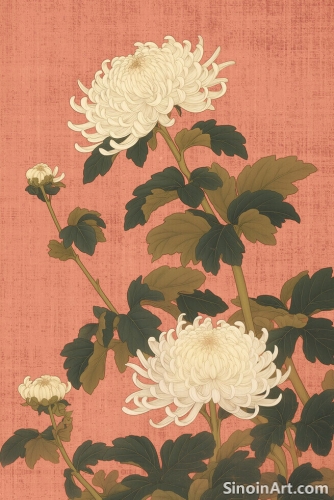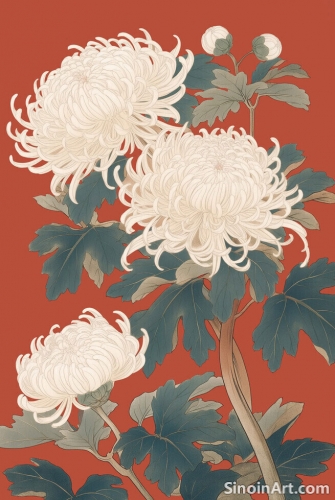The Emotional Impact of Gongbi Painting
|
Beyond its technical precision and aesthetic beauty, Gongbi painting has the power to evoke a range of emotions in the viewer. The intricate detail, subtle color palettes, and carefully chosen subject matter all contribute to the overall emotional impact of the artworks. The combination of technical skill and artistic vision creates a work that has a powerful emotional component.  The meticulous rendering of natural elements, such as flowers and birds, can evoke feelings of peace, tranquility, and awe. The careful use of color and detail draws the viewer into a meditative space. The art creates a powerful emotional experience through the accurate depiction of nature.  The depiction of historical figures and scenes from mythology can evoke feelings of reverence, respect, and cultural pride. The use of careful detail and symbolic imagery help to elevate the subjects to something more than simple historical representation.  The use of soft, subtle colors and precise linework can create a sense of delicate beauty and fragility, evoking a sense of tenderness and empathy. The use of these techniques helps to draw an emotional response from the viewer. The use of symbolism in Gongbi paintings can also add emotional layers to the artwork. The use of specific cultural symbols can convey specific emotions and also invite the viewer to connect to the art on a more personal level. Ultimately, Gongbi painting has the ability to create a range of emotional responses in the viewer, from feelings of awe and wonder to emotions of peace, tenderness, and cultural pride. The combination of technical skill and artistic expression creates work that is both visually and emotionally compelling. |
Tag : Emotional art, art and emotion, Gongbi feeling, evocative art, visual impact
Related information
- Gongbi Painting and its Role in Cultural Diplomacy
- Gongbi Painting as a Form of Meditation and Mindfulness
- The Use of Gold Leaf in Gongbi: Adding a Touch of Opulence
- Famous Gongbi Artists: Masters of the Meticulous Brush
- The Use of Perspective and Space in Gongbi Painting
This article explores the role of Gongbi painting in cultural diplomacy, highlighting its ability to foster cross-cultural understanding, promote artistic collaboration, and serve as a symbol of Chinese cultural identity on the global stage.
This article explores the connection between Gongbi painting and meditation, highlighting how the meticulous process fosters mindfulness, focus, and a contemplative state of mind for the artist.
Discusses the use of gold leaf in Gongbi painting, its application techniques, symbolism, and contribution to the opulence and visual impact of the art.
This article highlights the contributions of famous Gongbi artists throughout history, including Emperor Huizong, Li Tang, Qiu Ying, and Chen Hongshou, discussing their unique styles and influence on the tradition.
This article explores the use of perspective and space in Gongbi painting, highlighting how artists blend traditional approaches with modern techniques to create a sense of depth, distance, and visual dynamism.